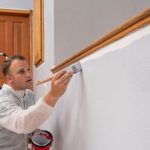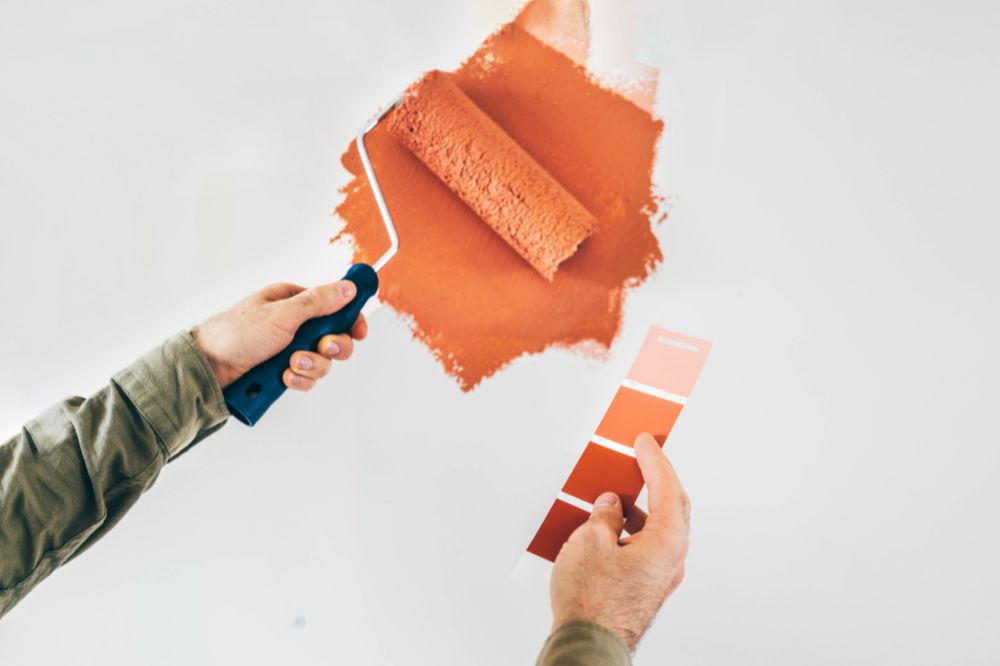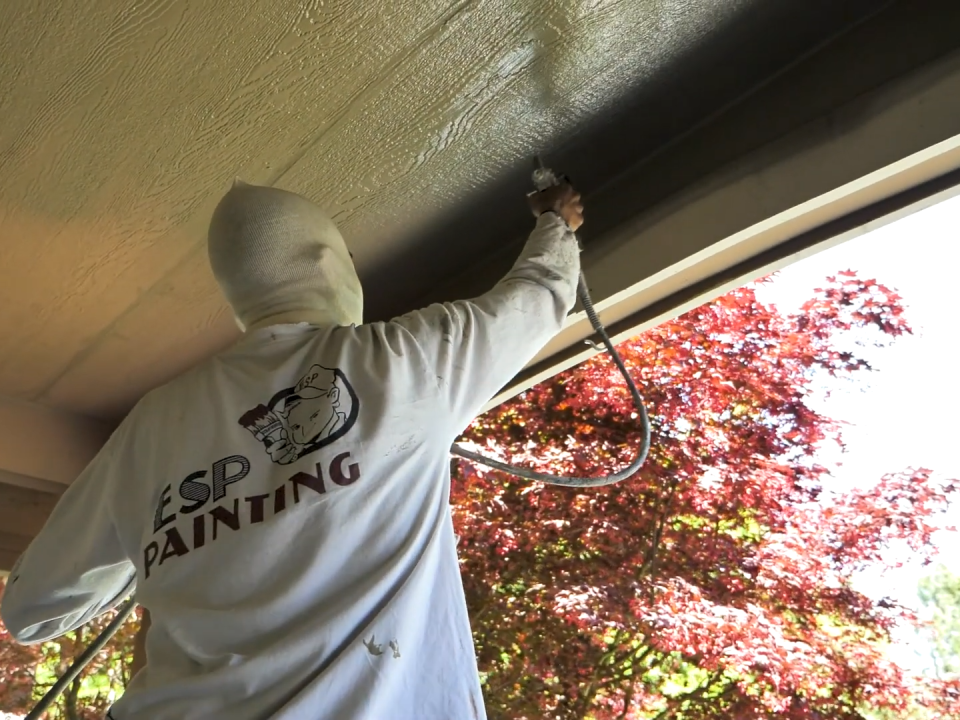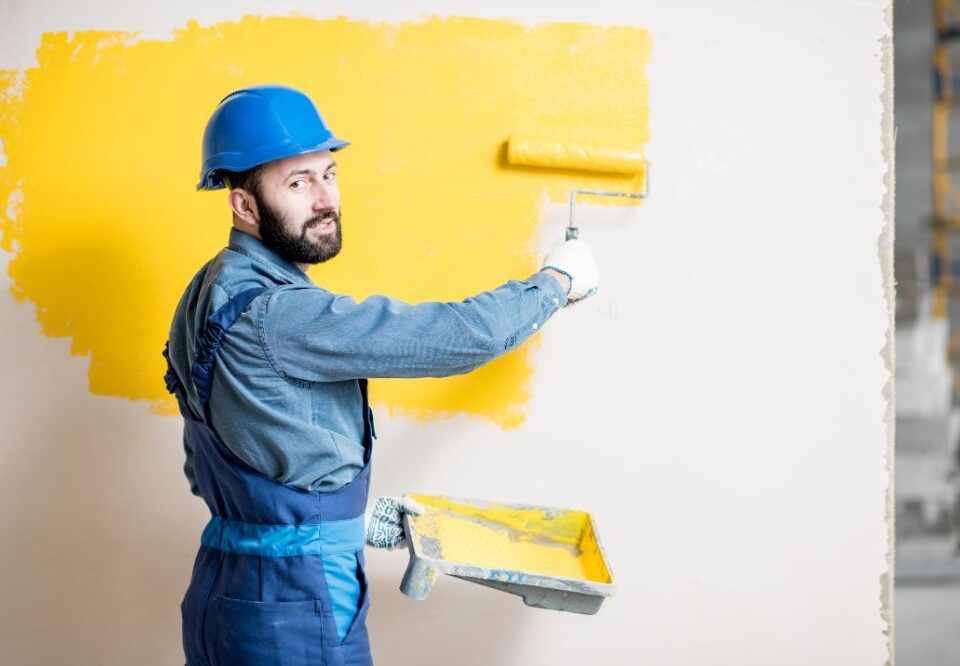
The Top Interior Paint Trends to Watch This Year
March 18, 2025
Professional Painting vs. DIY: What You Need to Know
April 30, 2025A fresh paint job can completely transform your home. Whether you’re updating your interior walls or giving your home’s exterior a facelift, preparation is the key to achieving a smooth, long-lasting finish. But let’s be honest—most people just want to pick a color and start painting.
Skipping the prep work can lead to uneven surfaces, peeling paint, or a rough-looking finish. Think of it like cooking—the final dish won’t turn out right if you don’t prep your ingredients properly. The same goes for painting.
By following the right steps before you open a paint can, you can save yourself from frustration and costly mistakes. Here’s what you need to do to prepare your home for a flawless paint job.
Tips to Prepare Your Home for a Flawless Paint Job
1. Declutter and Protect Your Space
Painting can get messy, and no one wants paint splatters on their furniture, floors, or—worse—their favorite couch. Before you start, clear out as much as possible.
- Move furniture to another room or at least push it to the center and cover it with plastic sheets.
- Take down wall hangings, curtains, and light switch covers.
- Use painter’s tape to protect trim, baseboards, and electrical outlets.
- Trim any overgrown plants near walls for exterior painting and cover landscaping with tarps.
Spending a little time prepping your space can save you hours of cleanup later.
2. Clean Walls and Surfaces
If you paint over dust, grease, or grime, the paint will not stick properly. Instead, it will look uneven or start peeling sooner than it should.
- Use a damp cloth to wipe down interior walls.
- Use mild soap and water to remove grease or buildup in kitchens and bathrooms.
- A pressure washer is a great way to get rid of dirt and peeling paint for exterior surfaces.
Let everything dry completely before moving on to the next step. Otherwise, you could trap moisture under the paint, leading to bubbling or cracking. If you need expert guidance, professional painting contractors in Portland, Oregon can help you with the prep and painting process.
3. Repair Cracks, Holes, and Imperfections
Paint will not cover up wall damage—it will highlight it. So, before you start painting, inspect your walls and fix any cracks, holes, or uneven spots.
- Use spackle to fill small nail holes and sand them smooth.
- Caulk gaps around windows, doors, and trim.
- Scrape off the peeling paint and sand the surface for an even finish.
For larger holes, you may need a patching compound. Smoothing out imperfections ensures a professional-looking result.
4. Choose the Right Primer
Primer might seem like an extra step, but it’s a game-changer. It helps the paint stick better, evens out the surface, and prevents stains from showing through.
- Use a drywall primer for new walls.
- If painting over dark colors, a tinted primer can reduce the number of paint coats needed.
- Glossy surfaces or oil-based paints require a bonding primer.
Skipping the primer could mean more coats of paint—and more work for you.
5. Pick the Right Paint and Tools
Not all paint is created equal. The type of paint and tools you use can make a big difference in how smooth the finish looks and how long it lasts.
- Matte finishes hide imperfections, while satin or semi-gloss finishes are easier to clean.
- Use high-quality rollers and brushes to avoid streaks or visible brush strokes.
- For exterior painting, choose weather-resistant paint that can withstand temperature changes.
If you’re unsure about what products to use, experienced Portland house painters can recommend the best options for your home.
6. Test Your Color Choice
Ever picked a paint color that looked great in the store but completely different on your walls? That’s because lighting and surroundings affect how colors appear.
- Paint a small test patch and observe it at different times of the day.
- Compare it in both natural and artificial light.
- If painting multiple rooms, check how colors transition between spaces.
Taking the time to test colors can save you from repainting an entire room because the shade didn’t turn out as expected.
7. Plan for the Right Weather (For Exterior Painting)
If you’re painting your home’s exterior, timing matters. The wrong weather conditions can affect how well the paint adheres and how long it lasts.
- The best temperature range for painting is between 50-85°F.
- Avoid painting in direct sunlight, as heat can cause paint to dry too quickly and lead to uneven coverage.
- Ensure there’s no rain in the forecast for at least 24 hours after painting.
Painting in the right conditions helps ensure a smoother, longer-lasting finish.
What’s Next?
A great paint job doesn’t start with the brush—it begins with proper preparation. Taking the time to clean, repair, and prime your walls ensures better adhesion, smoother application, and a longer-lasting finish. Whether tackling an indoor refresh or an exterior makeover, following these steps will help you achieve professional-looking results.
If you want to skip the hassle and ensure a flawless paint job, ESP Painting has got you covered. Our team of experienced professionals knows exactly how to prep and paint your home for long-lasting beauty. Contact us today for expert painting services that bring your vision to life.

Jeff Sommers is a vibrant and experienced professional, having been at the helm of ESP Painting, Inc. for 27 remarkable years. As President, he has become an esteemed leader in the Commercial & Residential Construction industry in Oregon, United States. His experience has seen him gain valuable insight and knowledge, making him an invaluable asset to ESP Painting and its customers. With a bubbly personality and upbeat attitude, Jeff always looks ahead to the future as he continues his leadership journey toward success.





